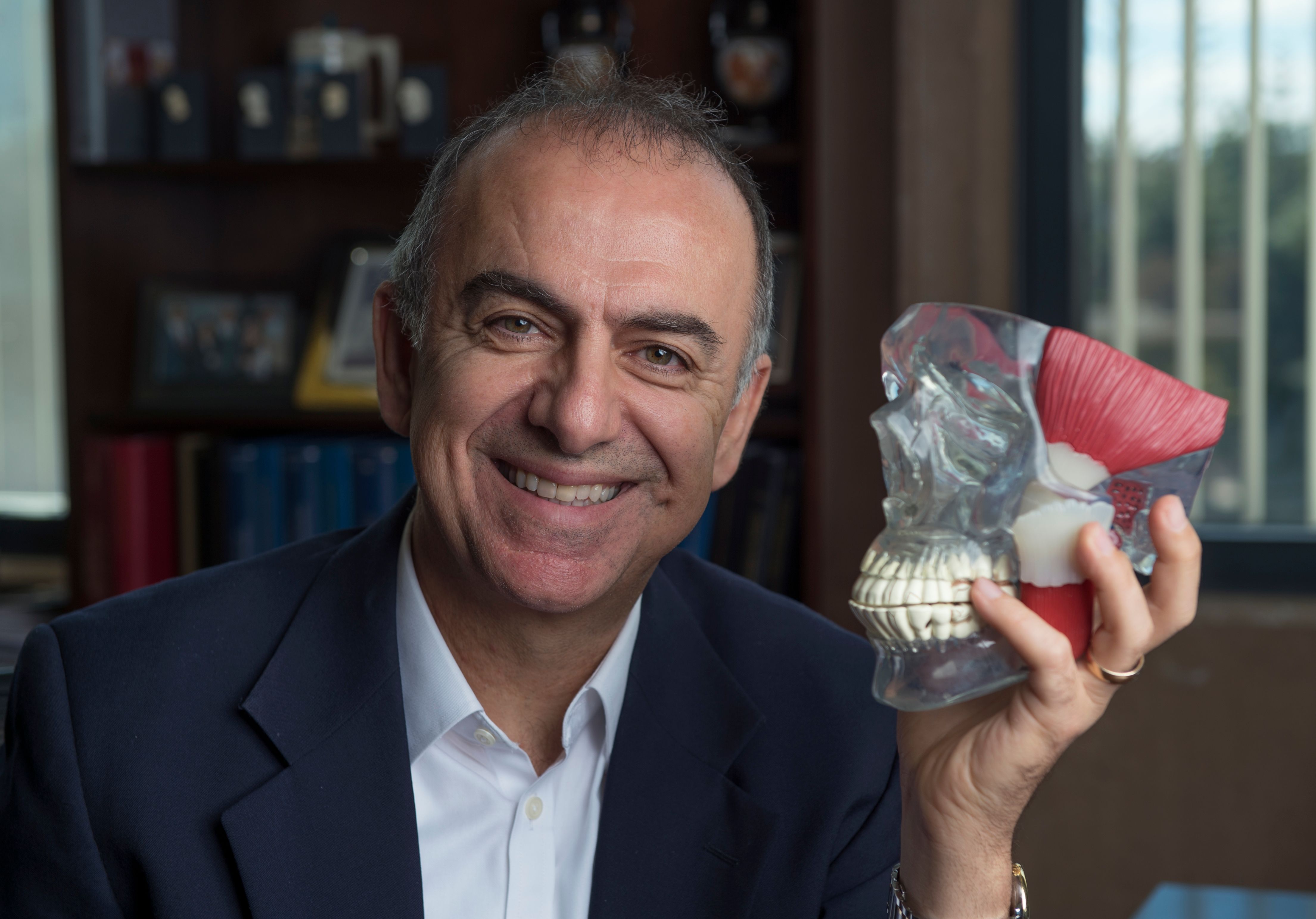New Strategy for Treating TMJ Will Impact Dental Community
Results of a University of California Irvine study show a tissue implant can safely treat temporomandibular joint disfunction in animal models.

“This is the first time that cogent healing has been shown in the TMJ area, [and] the first time anyone has shown successful biomechanical healing in any joint” said Dr. Athanasiou PhD, PhM, MS. PHOTO CREDIT: Steve Zylios, University of California - Irvine
Results of a University of California — Irvine study show that a tissue implant can safely treat temporomandibular joint disfunction in animal models. Senior author of the study in Science Translational Medicine Kyriacos A. Athanasiou, PhD, PhM, MS has spent close to 20 years researching the widespread condition and potential treatments. “This is the first time that cogent healing has been shown in the TMJ area, [and] the first time anyone has shown successful biomechanical healing in any joint” said Athanasiou.
Many TMJ disfunction suffers are young women who develop defects in the cartilage disk that connects the mandible and the temporal bone. This can lead to difficulties with speaking, eating and more serious conditions like arthritis.
The researches from UCI, University of California — Davis and the University of Texas Houston School of Dentistry used animal models to test the reengineered tissue implant. Scientists utilized existing rib tissue of a donor test subject to isolate cartilage cells, then used it to engineer jaw tissue cartilage. After surgically inserting the new cells into the defective jaw joint of the compromised animal subject, the TMJ issues were completely resolved.
Further insight into the regenerative methods must be obtained before it can be brought to clinical trial. “We follow the FDA paradigm” said Athanasiou, adding “once appropriate [animal] studies are performed, we are keen on proceeding with clinical studies”
Considering the complexity of the temporomandibular joint, Anthanasiou acknowledges the barriers to human treatment. “The main barrier to human treatment is the fact that we have not examined the use of tissue-engineered constructs in a chronically inflamed joint” he clarifies. “We also need to understand that the TMJ is an inadequately studied and ill-understood joint, when compared to other joints in the body; as a result, we need to move into potential clinical use with caution” he adds. And while Anthanasiou acknowledges the limited scope of the research, he does not anticipate the newly engineered tissue being more susceptible to degenerative disease than natural tissue.
According to Natalia Vapniarsky, a veterinary pathologist in the UC Davis School of Veterinary Medicine, the problem with "most medical management approaches for TMJ disc issues [is they are not] curative, but palliative” meaning the patient often needs a prosthetic implant when they end up with destroyed cartilage tissue. Anthanasiou is enthusiastic about the research success and the future potential to aid TMJ disorder suffers. “Assuming that safety and efficacy are shown in clinical studies, then the dental community should be able to point to a successful last resort approach to the very difficult problems associated with TMJ afflictions” he said.
Even with the groundbreaking development, Anthanasiou says surgical intervention for treating TMJ disfunction will still be a last-ditch effort treatment option in dentistry. “Surgery should always be a last resort approach” he said, when asked about the current protocols surrounding treating TMJ disorders. “But based on this work” he continues, “we are excited about the potential of providing a robust way of arresting the development of TMJ disorders and stop their catastrophic effects”.
Click here to sign up for more Dentist's Money Digest content and updates.RELATED:
More Coverage on
- Despite Claims, Toothpaste Alone Can't Stop Enamel Loss, Sensitivity
- The Multiple Benefits of Easing Patient Fears
- New Tech Might Replace Established Treatment Options for Enamel Loss